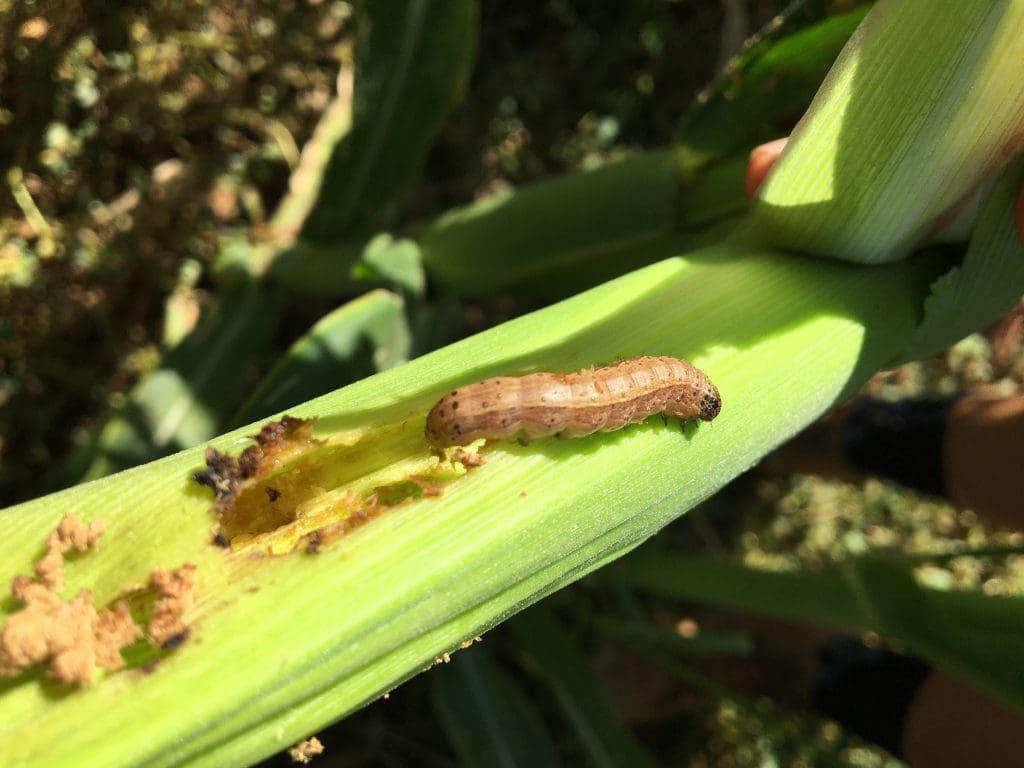
Fall armyworm larvae on a corn leaf in Kununurra, Western Australia.
THE invasive pest fall armyworm (Spodoptera frugiperda) has been confirmed near Broome in Western Australia’s Kimberley region, following the earlier discovery of the pest in Kununurra.
The WA Department of Primary Industries and Regional Development (DPIRD) has identified two specimens, the first collected on forage sorghum south of Broome and the second on Rhodes grass on a property east of Broome.
Fall armyworm is native to tropical and subtropical regions of the Americas. Since 2016 it has rapidly spread to and throughout Africa, the Indian subcontinent, China and Southeast Asia. It has been found in north Queensland and the Northern Territory. It was recently detected near Emerald in Queensland’s Central Highlands region.
In Western Australia, pheromone traps have been distributed in Kununurra, Broome, Carnarvon and Geraldton, as part of surveillance to help determine the spread of the pest.
DPIRD senior research scientist Helen Spafford urged growers to be alert for the pest, which can spread quickly due to its ability to fly long distances.
“The wide host range and high reproductive capacity of fall armyworm mean its numbers can build up quickly and over a large area,” Dr Spafford said.
“The larvae are likely to continue to emerge in crops during autumn, particularly in our northern agricultural areas where the climate is ideal for the pest to establish and spread.
“It’s helpful to learn to identify the pest in its larval stage because the adults and other life stages are hard to distinguish from other pests already established in Western Australia.”
Young, fall armyworm larvae are light coloured with a darker head. As they develop the body darkens, becoming browner with white lengthwise stripes. They also develop dark spots, the pattern of which is important, with spines.
Adult moths are 32-40mm in length, wing tip to wing tip, with a brown or grey forewing and a white hind leg. Male fall armyworm moths have more patterns and a distinct spot on each of their forewings.
Dr Spafford encouraged producers to monitor regularly and implement on-farm biosecurity measures to protect their crops and pastures from the pest.
“Fall armyworm is here, it’s spreading and we’re going to have to learn to manage it,” she said.
Growers and agronomists are encouraged to report any unexpected symptoms in the field by using MyPestGuideTM Reporter (app or online) or contacting DPIRD’s Pest and Disease Information Service on +61 (0)8 9368 3080 or [email protected].
Permits are in place for fall armyworm control in horticulture and grains crops. More information is available from the Australian Pesticides and Veterinary Medicines Authority website; apvma.gov.au.
Source: DPIRD
More information on fall armyworm is available from the DPIRD website agric.wa.gov.au; search ‘fall armyworm’.
Grain Central: Get our free daily cropping news straight to your inbox – Click here



HAVE YOUR SAY